Illustrative Math - Algebra 2 - Unit 5 - Lesson 9
By Formative Library
starstarstarstarstar
Last updated about 1 year ago
13 Questions
1
1.
Here are graphs of functions f and g. For each, determine the value of k so that g(x)=f(kx).
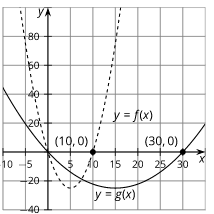
F.BF.3
F.IF.4
1
2.
Here are graphs of functions f and g. For each, determine the value of k so that g(x)=f(kx).
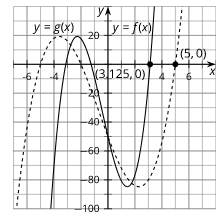
F.BF.3
F.IF.4
1
3.
Here are graphs of functions f and g. For each, determine the value of k so that g(x)=f(kx).
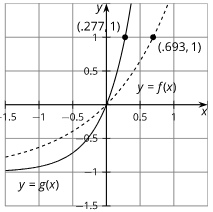
F.BF.3
F.IF.4
1
4.
Here are graphs of functions f and g. For each, determine the value of k so that g(x)=f(kx).
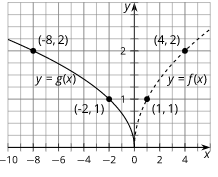
F.BF.3
F.IF.4

1
5.
1
6.
1
7.
1
8.
A bacteria population, in thousands, is modeled by the function f(d)=30*2^{d} where d is the number of days since it was first measured. The function g gives the bacteria population, in thousands, w weeks after it was first measured.
Express g in terms of f. Explain your reasoning.
F.BF.3
F.IF.4

1
9.
1
10.
1
11.
1
12.
Here is the graph of a function f.
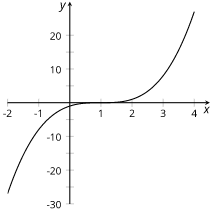
Reflecting f across the x-axis and then across the vertical line y=1 takes the graph of f back to itself. Tyler says that this means f is an odd function.
Do you agree with Tyler? Explain your reasoning.
F.BF.3
F.IF.4
1
13.
The population of sloths in an area has been increasing by 5% each year since 2000. Let P model the population P(t), in thousands, of sloths years after the year 2000. The graph of p(t)=1.05^{t} has a general shape that fits the data.
Find a scale factor k so that P(t)=kp(t) fits the data.
F.BF.3
F.IF.4
This lesson is from Illustrative Mathematics. Algebra 2, Unit 5, Lesson 9. Internet. Available from https://curriculum.illustrativemathematics.org/HS/teachers/3/5/9/index.html ; accessed 27/July/2021.
IM Algebra 1, Geometry, Algebra 2 is © 2019 Illustrative Mathematics. Licensed under the Creative Commons Attribution 4.0 International License (CC BY 4.0).
The Illustrative Mathematics name and logo are not subject to the Creative Commons license and may not be used without the prior and express written consent of Illustrative Mathematics.
These materials include public domain images or openly licensed images that are copyrighted by their respective owners. Openly licensed images remain under the terms of their respective licenses. See the image attribution section for more information.